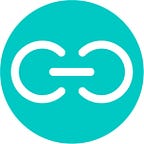There’s no denying that education is costly. It’s now common for a student to take a US $ 200,000 loan for pursuing higher education. Estimated amount of total student debt in the world exceeds US $ 1.3 trillion.
Good educational institutions are expensive. Additionally, paper-based educational certificates, records, contents and other related materials make it hard to manage the institutions. The certificates and similar credentials can be faked easily, and the organizations that need to verify the authenticity of certificates, for e.g. a prospective employer, has to explicitly trust the issuer.
As always, there are systematic areas where technology can help. The EdTech industry is expected to reach US $ 252 billion by 2020, and time is ripe for innovative technologies to create new value, which we look at in this article focusing on blockchain.
On the positive side, technology has given rise to e-learning but online learning has multiple limitations. Most courses are pre-recorded, and only 3–5% of courses feature live instructors. Moreover, of the 7.0 Billion worldwide population only 60 million take courses online.
There are also usually a large number of courses for the same topic, offering different standards of quality, making it hard for the students to choose the right one for their purpose. More than 6,850 Massive Online Courses (MOOCs) exist! The certificates still require the prospective employer to explicitly trust the issuer, as part of the verification process.
Blockchain, with its promise of decentralization and immutable records, can play an important part in transforming the Education Technology (EdTech) landscape.
(Pro users can skip to the next paragraph) It’s a distributed database, where computers on the network, also called ‘nodes’, maintain a shared version of truth that is permanent. Each node has equal authority, and updates to blockchain needn’t be routed through any central authority. The system can’t be destroyed by taking out any central server, because all nodes have complete and latest information on the blockchain with them. Each node can be considered a ledger and hence blockchain is also called ‘distributed ledger technology’ (DLT). Block records, also called ‘blocks’ are linked together in a predetermined protocol. No existing record can be deleted or modified. Updating a blockchain essentially means adding a new block. Since every node can update blockchain, maintaining sequence of transaction is imperative for maintaining data integrity, and blockchain achieves this by consensus mechanism, where a new transaction must be approved by a majority of stakeholders. There can different consensus algorithms. In public blockchain, such as the one underpinning its famous application Bitcoin, the consensus uses proof of work (POW) algorithm, where the majority of the participating nodes have to validate a transaction. On the other hand, enterprise blockchains may use proof of stake (PoS) algorithm, where majority of nodes that have deposited their crypto tokens for transaction validations need to approve a transaction. Irrespective of consensus algorithm used, adding a new block requires significant number crunching at high speed, and such rigor makes it economically non-viable to hack a blockchain. All blockchains use smart contracts, which are essentially pieces of code that perform legal functions, for e.g. allowing a node to take control of an entity. Decentralization, consensus algorithm, and smart contracts make information recorded on blockchain mathematically verified, and trust is ensured via the protocol, eliminating middlemen and the need to explicitly trust a person and organization.
While Financial Technology (FinTech) sector was the first to notice the promise of blockchain, now almost all industry verticals realize that whenever anything of value is to be stored securely, and transactions without intermediaries need to be enabled, blockchain can help their businesses.
Blockchain can help EdTech in the following ways:
- Eliminate paperwork, by storing all records and contents regarding education in a secured manner. Consensus mechanism makes it tamper-proof.
- Connect students with instructors for live instruction sessions, without middlemen. The technology offers decentralization by design, all nodes are responsible for maintaining the distributed database, and each node has equal authority.
- Enable instructors and contributors of educational content to get paid for their work using cryptocurrencies of the blockchain, with the relationship between service provider and the consumer of the service if governed by smart contracts. Smart contracts govern the relationship based on transparent conditions, and funds are transferred only after the services have been delivered according to the terms and conditions (T&Cs).
- Since education certificates and credentials will be mathematically verified on a blockchain, a prospective employer can verify the applicant’s educational credentials without having to explicitly trust the certificate issuer.
- Reduce cost because of elimination of paperwork, and reduced data management cost, leveraging the secured distributed database referred to above.
— -
Learn more about edChain: An open-source, decentralized library that enables sharing of educational content across apps and organizations. The system allows full attribution to content creator. Their Stellar blockchain platform facilitates governing the relationship and payment transactions between service provider and consumer with smart contracts.
We’ve just launched the edChain Telegram to channel before our ICO Pre-sale. Join to learn more about how we are about to democratize education and how you can earn some edcoin. https://t.me/edChain_io
